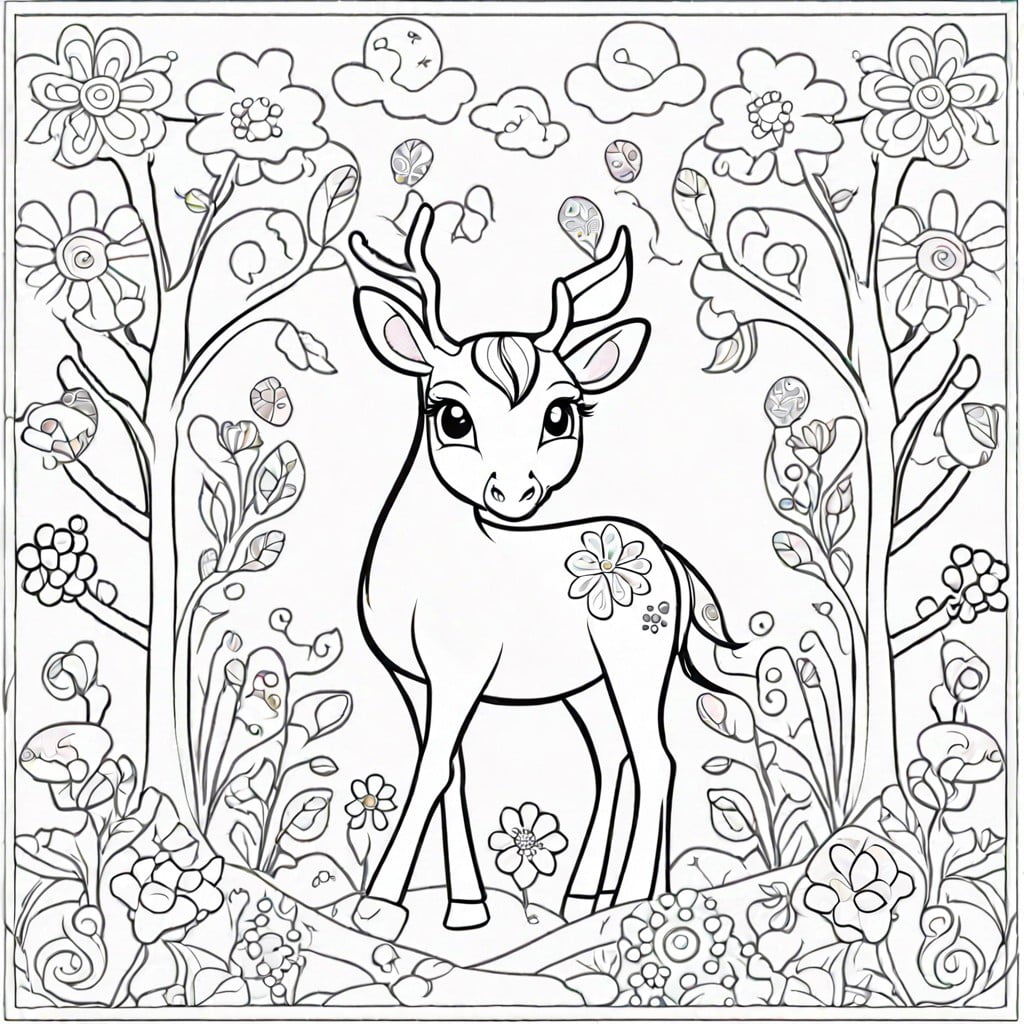Experience the ancient sacredness through creativity because our collection of tabernacle coloring pages allows you to interact with history in a vibrant, hands-on way.
Embark on a captivating journey with us as we explore unique ideas for tabernacle coloring pages.
Yes, we’re aware of the plethora of known ideas already available on the web. And don’t worry, we’ll include resources to the best existing concepts at the end of the article.
But our main goal here is to tread beyond the known, uncover new angles and present you with a refreshing list of creative possibilities.
Above all, we hope to provide you with a fresh perspective that will make your coloring experience even more unforgettable.
Let’s dive in and get those creative juices flowing!
Moses Building the Tabernacle
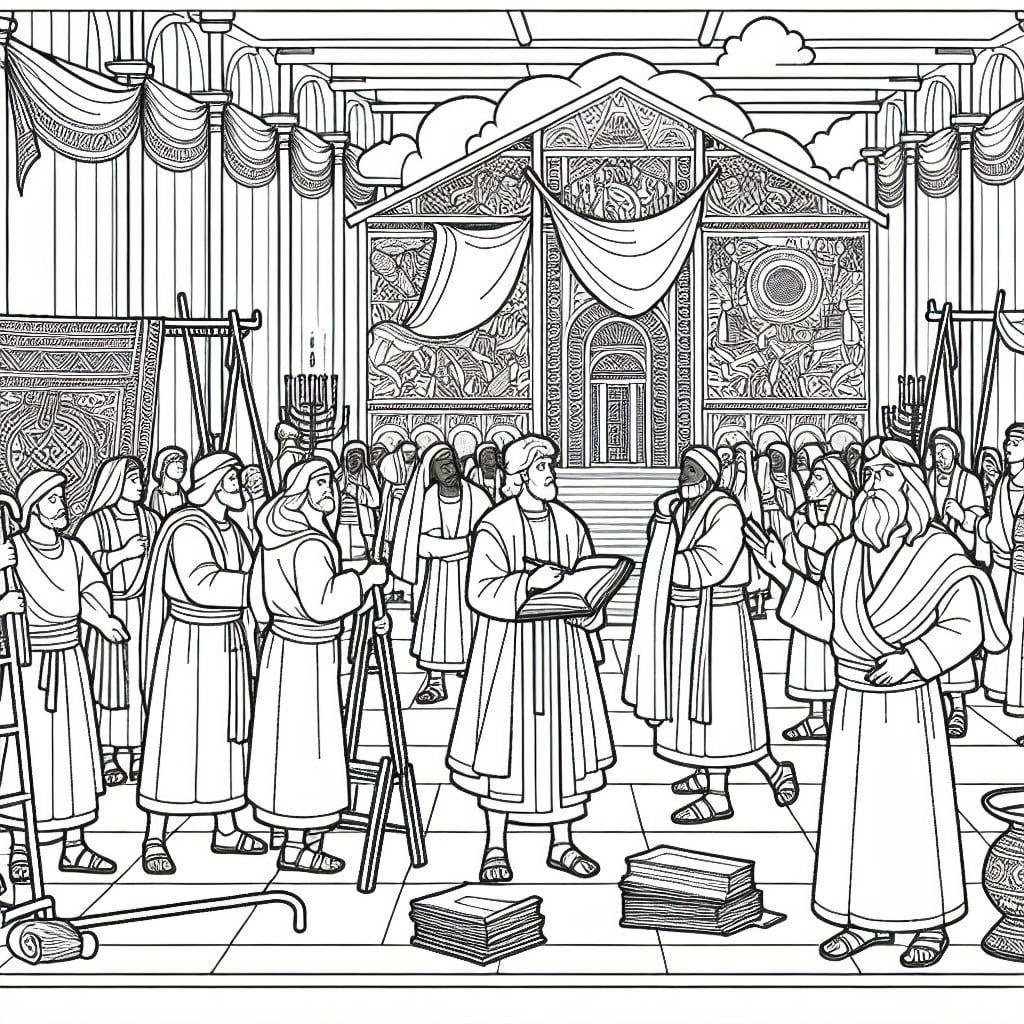
Discover the scene where Moses oversees the construction of the Tabernacle, as instructed by God on Mount Sinai. This powerful moment captures the Israelites working together, with elements like:
- Skilled artisans crafting the Tabernacle’s intricate details.
- The assembly of the wooden frames and colorful fabrics that form the structure.
- The communal effort as people bring offerings for the Tabernacle’s creation.
- Moses directing the activities, ensuring everything aligns with the divine blueprint.
Coloring this page lets you explore the materials used, like gold, silver, and bronze, and the various textures and patterns of the Tabernacle’s curtains and coverings. Engage with this pivotal event in the history of the Israelites through your artistry.
Ark of the Covenant

Considered the most sacred item within the tabernacle, the Ark of the Covenant represents God’s covenant with the Israelites after their escape from Egypt. When coloring this page, focus on the intricate details:
- The ark is a gold-plated wooden chest with a precious, shimmering appearance.
- On top of the ark, two cherubim made of pure gold face each other with outstretched wings.
- The space between the cherubim is called the Mercy Seat, where God’s presence is said to have dwelled.
- Inside the ark were the stone tablets of the Ten Commandments, a pot of manna, and Aaron’s rod that budded.
- Pay attention to the rich colors and reflective textures that could be used to signify the ark’s sacredness and the ornate design of the cherubim.
- There are rings and poles on the sides of the ark, used by the Levites to carry it; these can be colored to show the sacredness and care in handling the ark.
The Holy of Holies
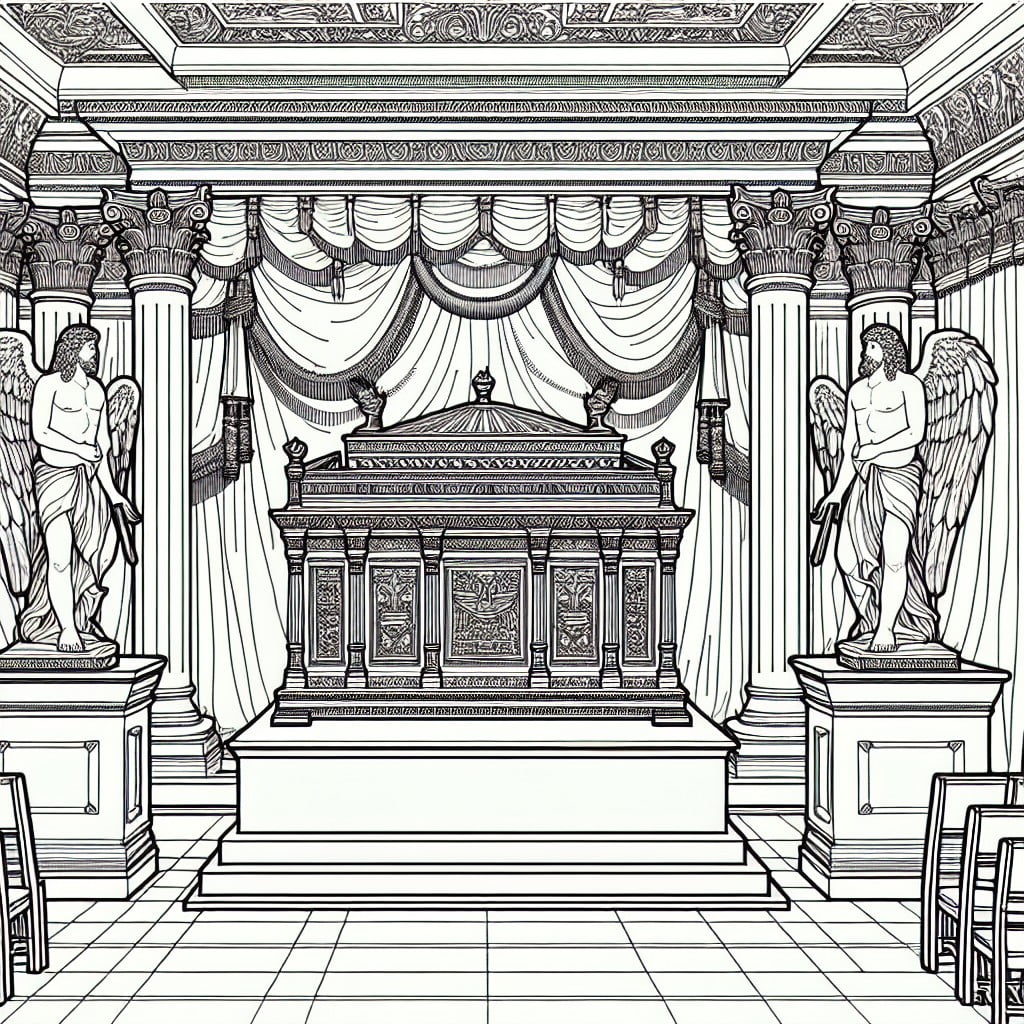
This innermost chamber held the Ark of the Covenant and was veiled from view, symbolizing the direct dwelling place of God’s presence. It was so sacred that only the High Priest could enter, and only once a year on the Day of Atonement, to make amends for the people’s sins.
The thick veil signified the separation between God and man, a barrier removed with the future promise of Christ’s atonement. Within the pages illustrating this sacred room, children can learn about reverence, the concept of holiness, and the historical roots of their faith.
Use rich colors to represent the precious materials and detailed craftsmanship of this most hallowed area in the tabernacle.
High Priest in Tabernacle
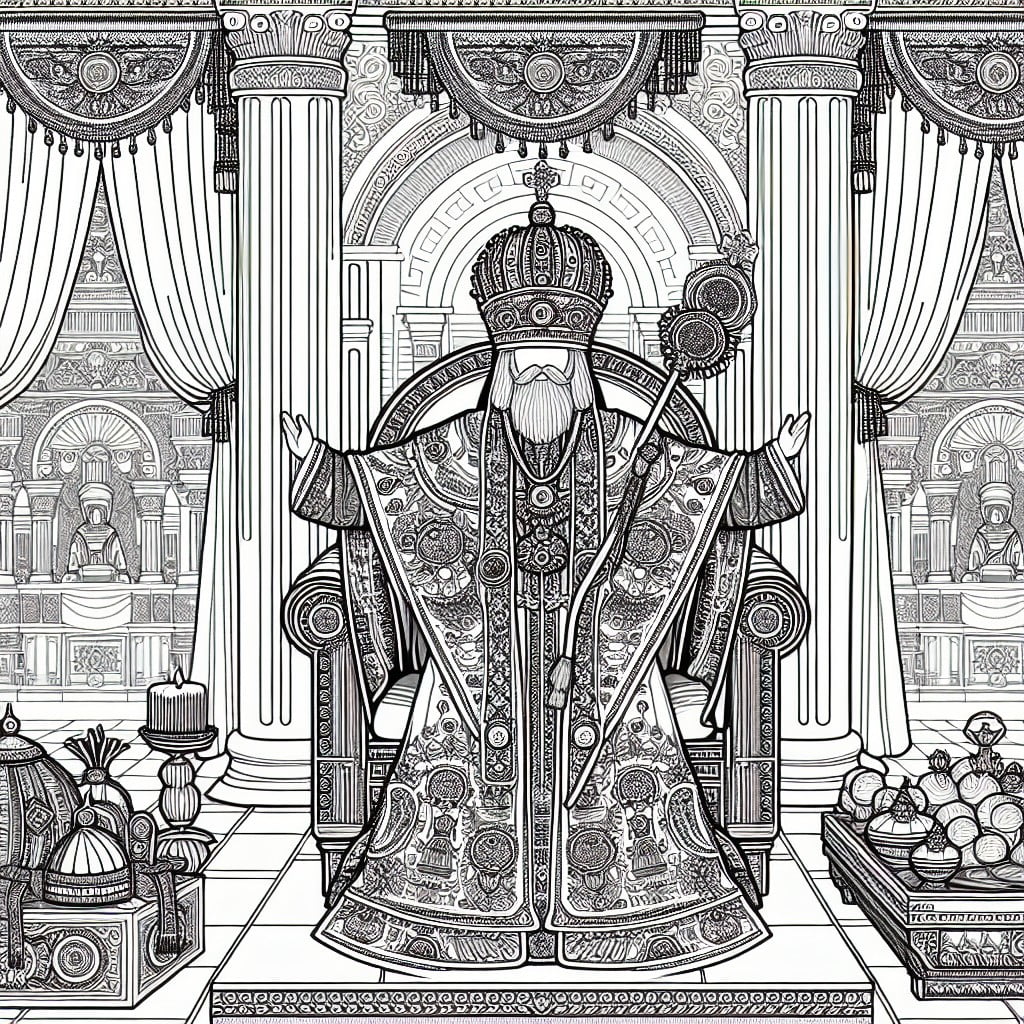
Capture the sanctity and grandeur of the High Priest adorned in ceremonial garb, standing as the intermediary between the people and the divine.
- Highlight the breastplate with twelve precious stones, each representing a tribe of Israel.
- Include the ephod, a sleeveless garment, in rich colors and intricate patterns.
- Detail the turban with the golden plate inscribed “Holy to the LORD.”
- Illustrate the priest performing rituals such as burning incense or sprinkling the blood of a sacrifice.
- Emphasize the solemn atmosphere of the High Priest’s service inside the sacred space.
Golden Lampstand
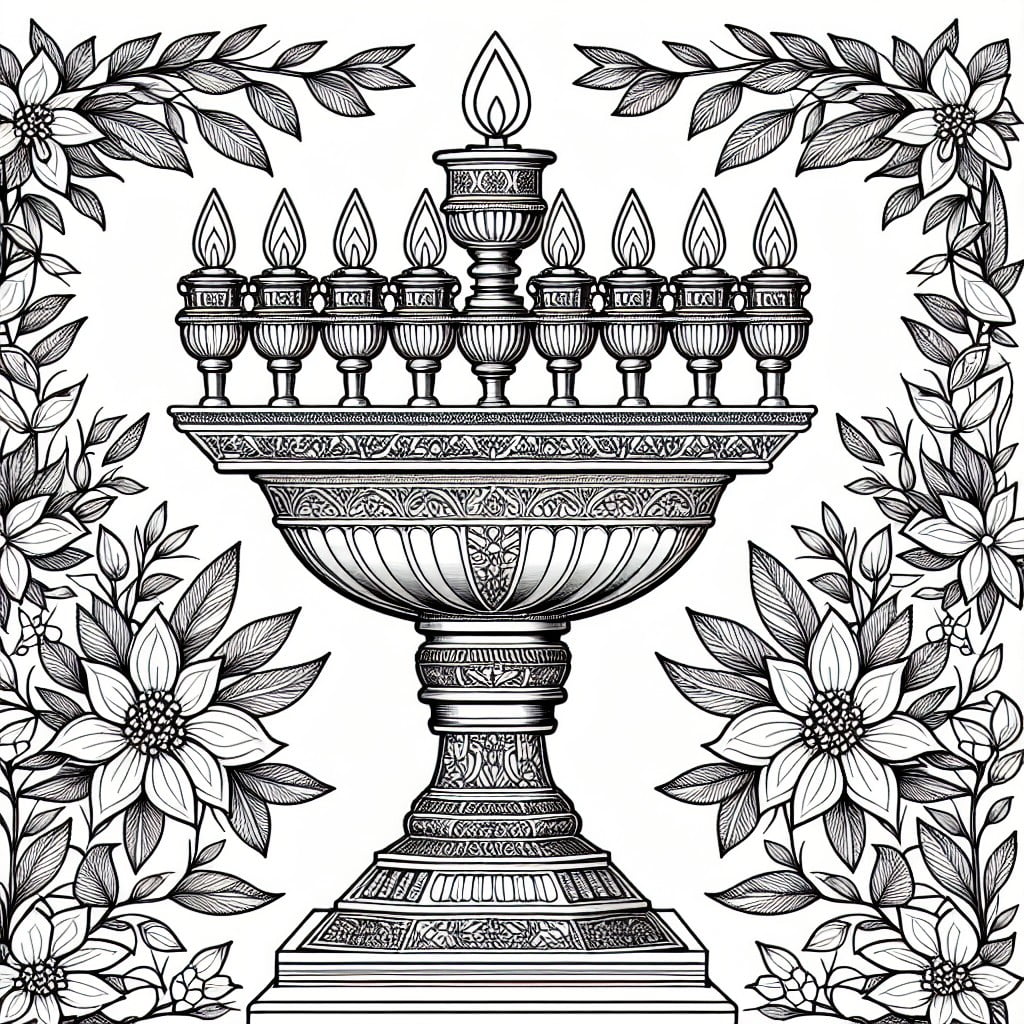
Crafted from pure gold, this seven-branched candelabrum symbolized the illumination of God’s spirit.
In this coloring page, children can add their glow to the intricate designs that adorned its shaft and branches.
Each branch can be uniquely ornamented, creating opportunities for diverse color schemes.
Encourage the use of metallic colors to mimic the shine of gold and highlight the lampstand’s sacred role in illuminating the space where priests worshipped.
Tabernacle With Cloud By Day
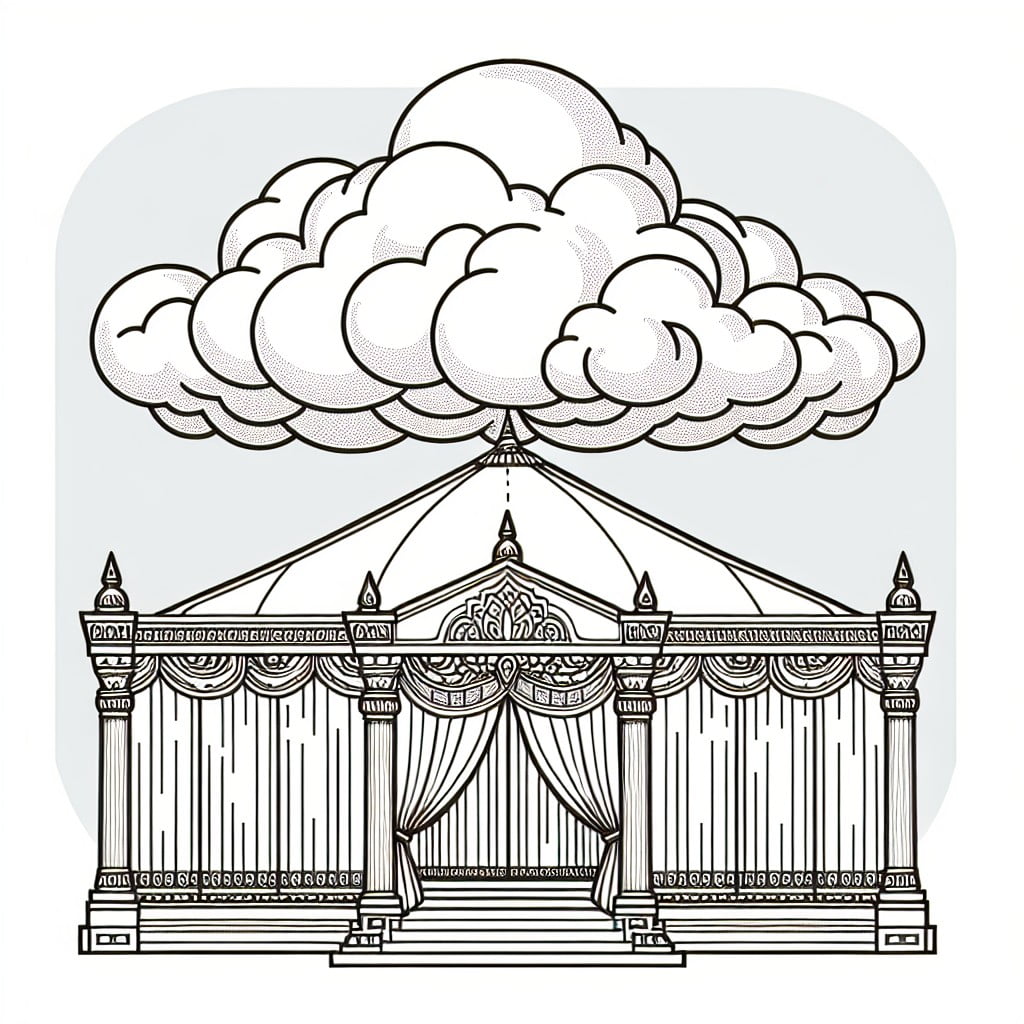
Capture the miraculous scene of the tabernacle under a guiding cloud, symbolizing divine presence and guidance. This coloring page will illustrate a soft, billowing cloud hovering over the sacred tent during the Israelites’ journey through the desert.
Consider adding subtle shades of blue and white to create a gentle contrast against the desert backdrop.
Encourage an appreciation for this biblical narrative as children add color to the scene, bringing to life the constant protection and direction provided to the Israelite people.
Emphasize the significance of faith and trust in something greater through the interactive process of coloring.
Tabernacle With Fire By Night

Capture the serene, yet powerful image of the tabernacle illuminated by a divine fire against a starry night sky. This illustration can teach about God’s constant presence and guidance, symbolized by the enduring flame.
Encourage the use of darker hues to depict the night, contrasting with vibrant oranges and reds for the fire, reinforcing the idea that light triumphs over darkness. This visual also offers an opportunity to discuss the Israelites’ experience in the wilderness, relying on celestial signs to feel connected to their faith.
Showbread Table
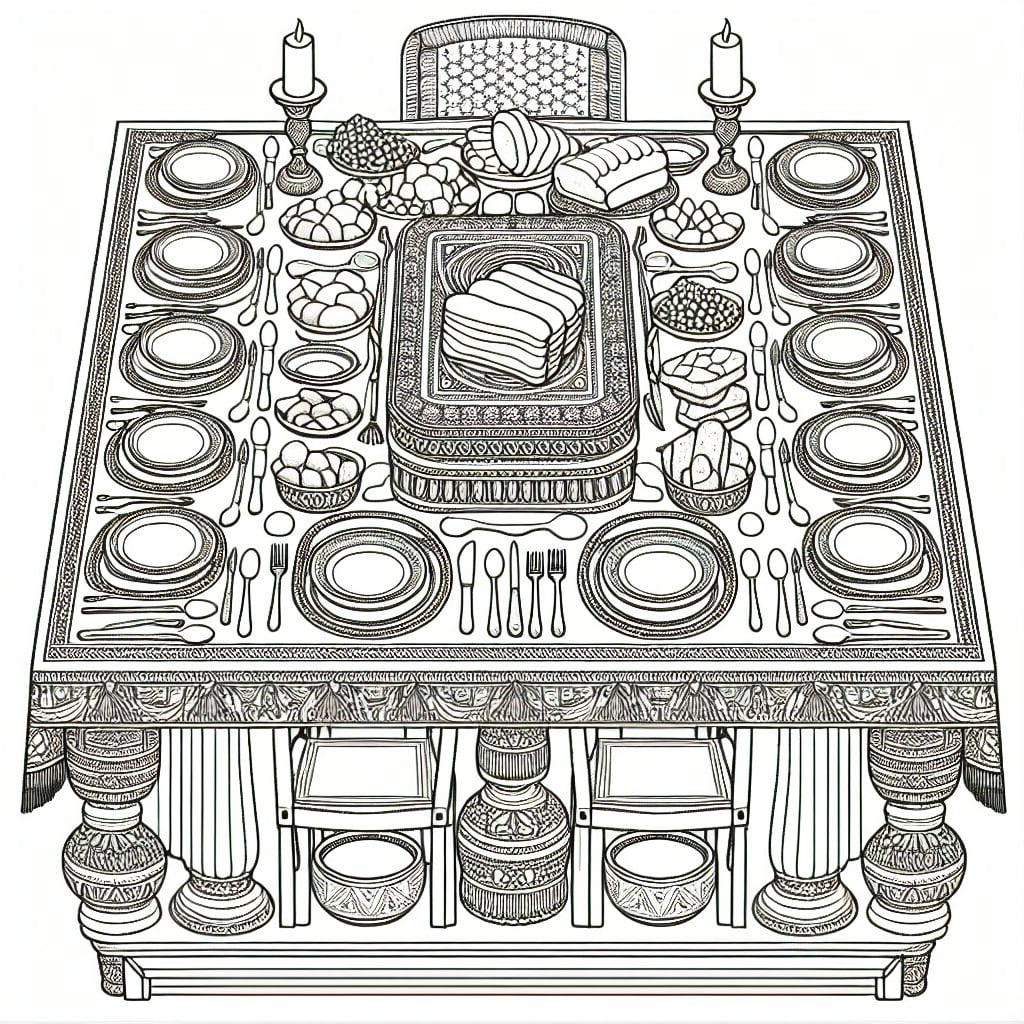
Honoring the tradition of the twelve tribes of Israel, each loaf on the showbread table signifies one tribe, symbolizing unity and sustenance.
This sacred table, crafted from fine acacia wood and overlaid with pure gold, invites coloring enthusiasts to blend rich brown tones with metallic hues for a regal effect.
Its placement within the Holy Place underscores its importance in worship and offerings to God.
As artists fill the page, they can reflect on the weekly ritual of priests replacing the bread as a continual offering, thereby connecting with ancient customs.
Altar of Incense

Explore the significance of the Altar of Incense, a place where sweet aromas represented prayers ascending to Heaven. Picture the detailed carvings and the priest performing the sacred ritual.
As you color, consider the continual intercession and deep reverence inherent in the practice, echoing the eternal nature of prayer. Illuminate the intricacy of its design, the billowing smoke, and the purposeful placement before the veil leading to the Holy of Holies.
Bronze Altar
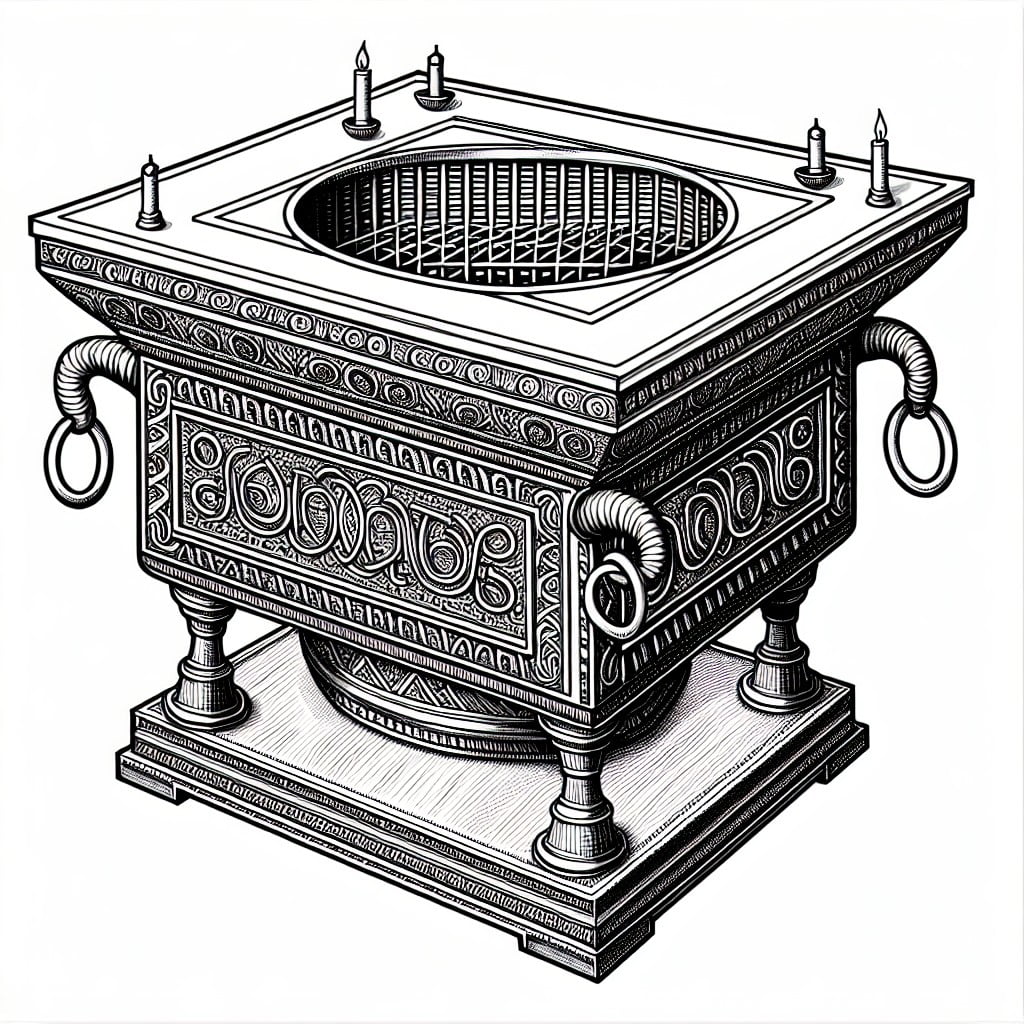
Visualize a robust structure central to sacrificial rites. Encourage shading to reflect its critical role in atonement and worship rituals.
Highlight its horns and the placement of animal sacrifices. Consider including the utensils used by priests, such as fire pans and meat hooks.
Emphasize the significance of fire, representing continual burnt offerings. Demonstrate how the altar was a place of forgiveness and communion with God, making it integral to Israelite faith and an enduring symbol of devotion.




